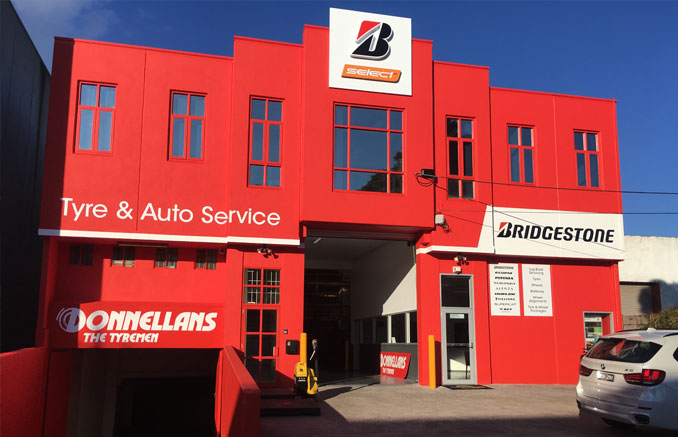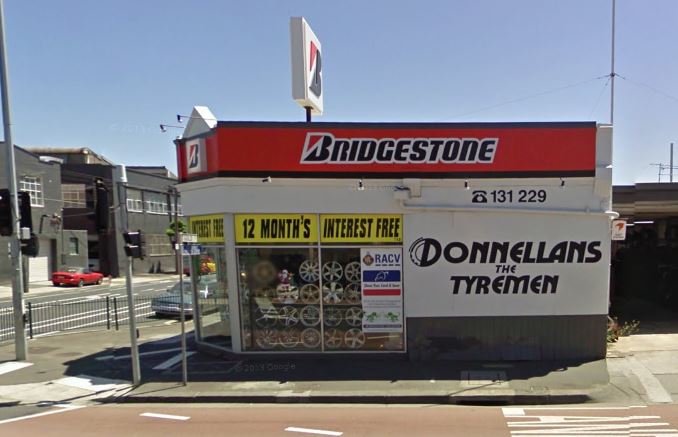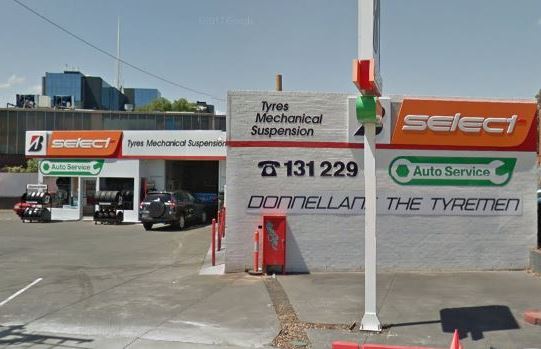Back to Latest News
Top Reasons to Replace your Tyres
There are many reasons to replace your tyres apart from the usual ‘they’re worn out’ but what are the most common reasons for replacing your tyres?
At Donnellans, customer safety is our top priority which is why we’ll go over your tyres when your vehicle is in and advise you if we find anything concerning.
Tyre Tread Depth
The most well known reason to replace your tyres is because the tread has worn away.
Tyres wearing down is a normal part of ownership, with most tyres lasting between 30 to 80-thousand kilometres before being considered ‘bald’. However at both extremes, some ultra sticky, soft performance tyres can be all used up before they even hit 10,000kms whereas some people get 140,000 from a set of all terrain tyres.
Typically, wet-weather performance will start to deteriorate when tread depth reaches 3 millimetres or less, with the legal minimum being 1.5mm of tread depth remaining at any point across the tyre.
Measuring your tread depth is easy to do and can be done with a ruler, a coin, or just with a cheap special made tool from your local auto parts store.
Damage
Tyres are the lowest part of your vehicle, and often subject to damage from curbs, debris and rough terrain. Not to mention the weight of a vehicle and whatever you have loaded in it.
Damaging a tyre is no fun, especially when you aren’t able to repair the tyre and need to replace it. Replacing tyres in at least pairs is recommended, while some all-wheel-drive vehicles have very specific requirements that tyres must be closely matched in diameters. Replacing one tyre in a half-worn set with a single new tyre can introduce all kinds of serious driveline issues and lead to expensive repairs.
Tyres can be damaged in various ways:
Punctures:
Tyre punctures are often caused by nails, screws, tools, sticks, fragments of metal and glass, and even pine needles can skewer a tyre and provide a direct path for air to leak out. Many punctures are just small injuries that can be repaired. Look at our guide on the different types of tyre damage for a more in-depth explainer on how tyres can be damaged and repaired.
Incorrect Wheel Alignment:
We often see tyres come in as a result of a poor wheel alignment, but why the vehicle has a poor wheel alignment can be from a few potential reasons. Minor collisions, worn out suspension bushings, shock absorbers or even failing wheel bearings can affect your wheel alignment.
Incorrect Tyre Pressures:
Tyres with too little pressure in them will have much more flex than a correctly inflated tyre, and this extra flexing will cause the tyre to heat up. Overheating a tyre can cause catastrophic damage.
Tyres losing pressure can be from a few different causes, with the most common being a puncture resulting in a slow leak..
Tyres are engineered to handle a lot of the abuse, but sometimes damage is too severe, or in an area of the tyre that sees significant stress such as the sidewall or the tyre shoulder.
Tyre temperature damage can be assessed from looking at the surface of the tyre, and can manifest itself in sidewall bulges or marks along the sidewalls.
Manufacturing Defects:
As with any mass-produced item, there is the potential for manufacturing defects. Whilst extremely rare, there may be instances where a tyre may be out of round, or improperly manufactured.
Tyres are an extremely important safety component in your vehicle and tyre manufacturers go to great lengths to ensure faulty products do not make it to the supply chain and into stores, where they could be fitted to your vehicle.
Tyre Age (exposure to elements)
A somewhat common reason to replace tyres is due to age and exposure to weather. Rubber is vulnerable to damage from UV light as well as temperature changes and oxidisation from exposure to air.
Old, dry rotted tyres are stiff and likely to crack if they’re driven on. Typically, this only happens to tyres between 8-10 years of age or older, and it’s unlikely that you’ll have tyres that reach this age on a vehicle that is frequently driven.
The manufacture date is written on the sidewall of your tyres. For instructions on how to read the information on your sidewalls, take a look at our article on how to understand tyre sidewall markings.
Tyres that have been on a vehicle that’s been in storage for a long time can develop flat spots, where the internal layers of the tyre have permanently sagged and shifted, causing uneven tyre wear or other damage.
Dry rotted tyres are unsafe to be driven on, even to a tyre store, and alternative ways to get your vehicle in to us are advised.
Contact Donnellans today
For a free tyre check, along with new tyre, wheel repair and other needs, bring your vehicle in to see the expert team at your nearest Donnellans!
We have 4 convenient locations with easy parking and within walking distance to nearby cafes and stores.
Contact us today!








